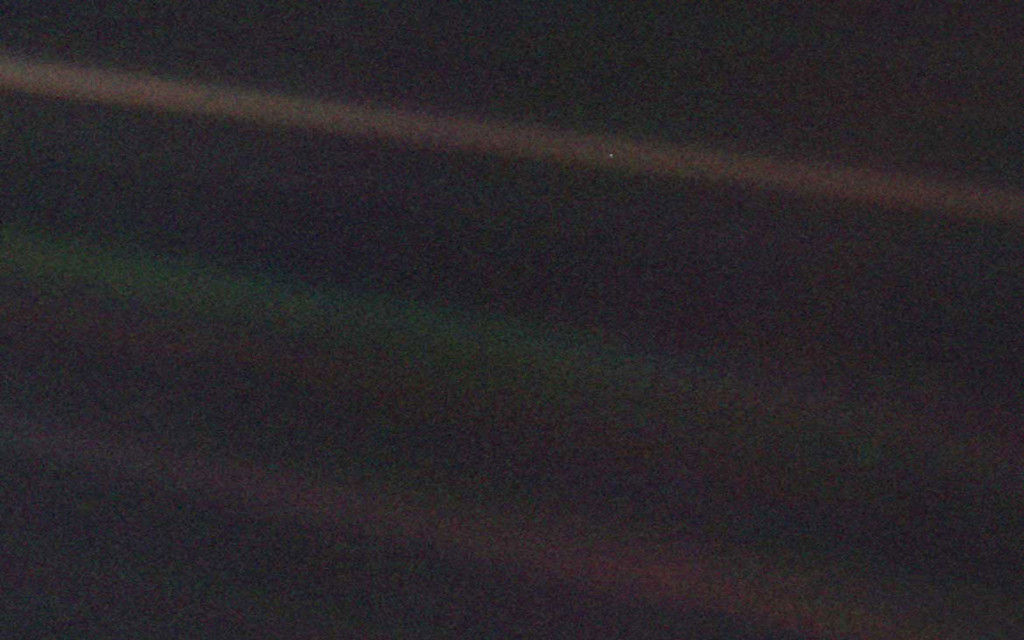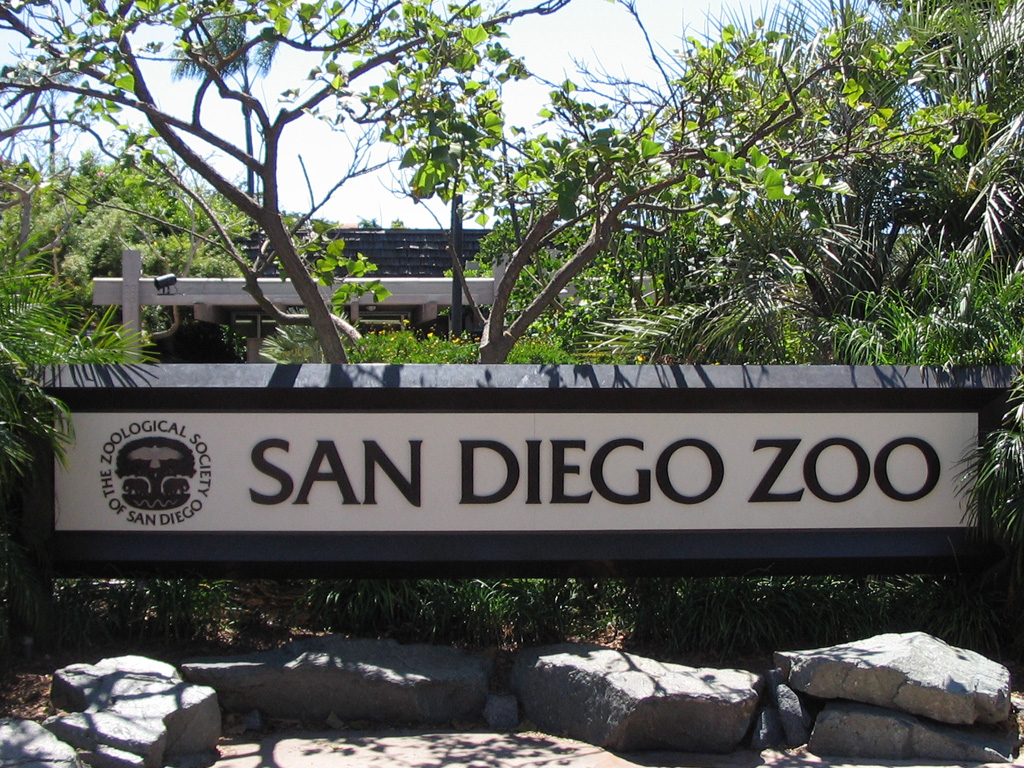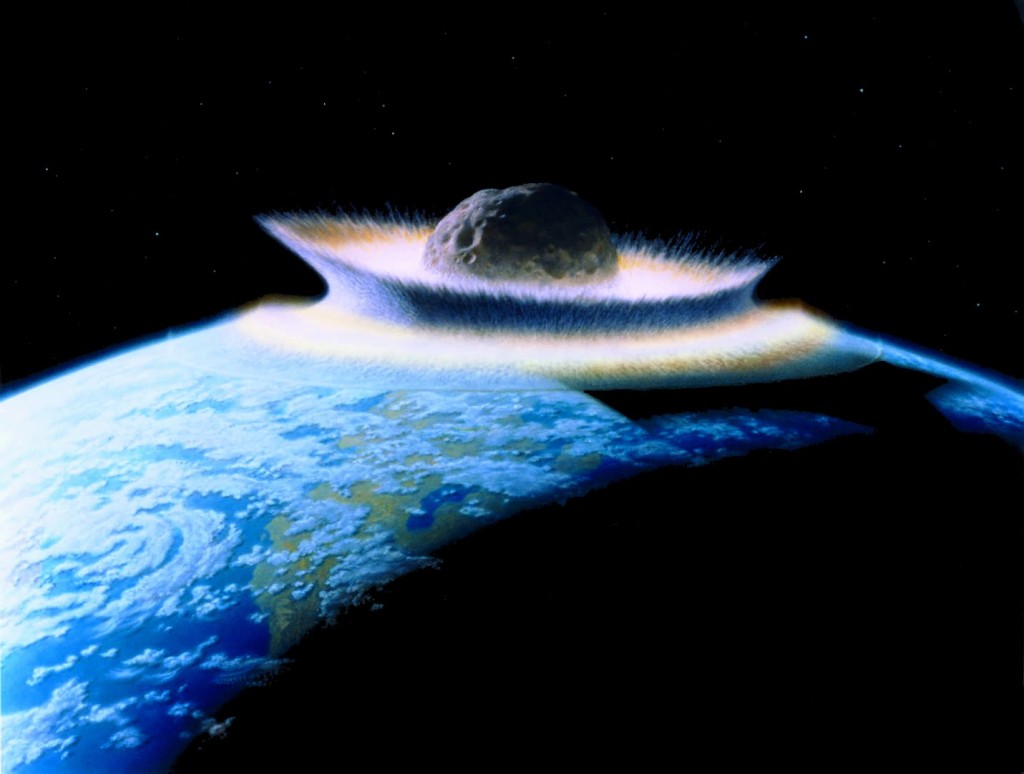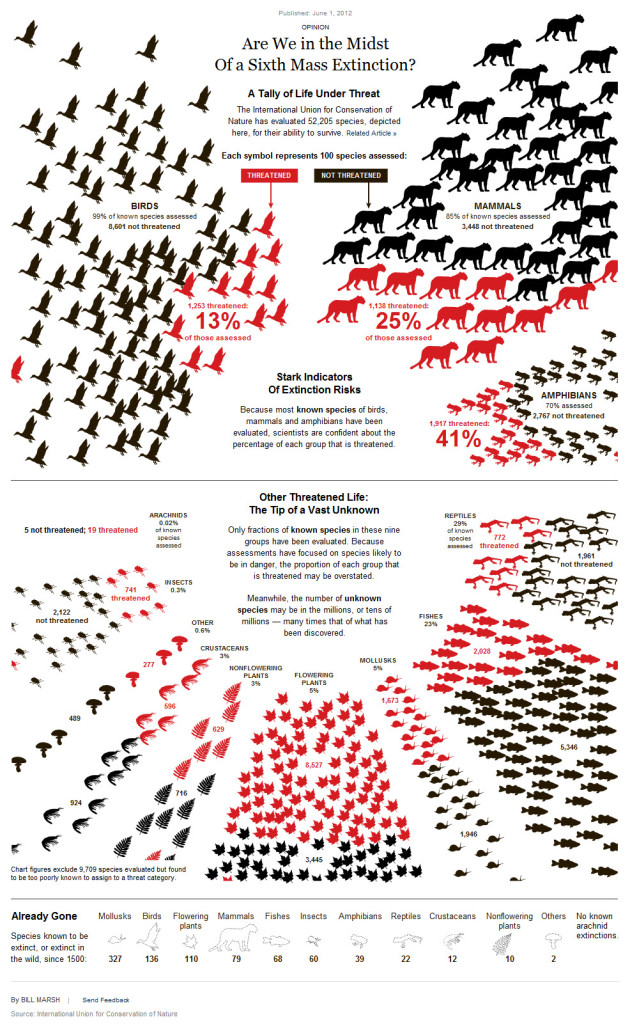-

-

-

-

-

-

-

-

-

-

-
-

-

-

-

-

-

-

-

-

-

-

-

-

-

-

-

-

-

-

-

-

-

-

-

-

-

-

-

-

-

-
-

-

-
 TOTW: Google's Project Ara Modular Phone May Be The Future Of SmartphonesOctober 30, 2014
TOTW: Google's Project Ara Modular Phone May Be The Future Of SmartphonesOctober 30, 2014 -

-

-

-

-

-

-

-

-

-

-

-

-

-

-
-
-

-

-

-

-

-

-

-

-

Posts tagged de-extinction
Are All Animals Doomed For Extinction? Part 4 – Is There Hope?
010 years
This is the final article in FFtech’s De-extinction and Conservation Tech series. To read the first article, go HERE, to read the second article, go HERE, and you can find our most recent article HERE.
So, is there hope for the animals of Earth? That’s the million dollar question. Are an ever-growing number of species ultimately doomed to extinction? While this question may be impossible to answer yet, it is certainly an outcome we all hope to avoid.
In the present, we can do some things to slow the biggest contributors to species extinction such as deforestation and poaching. Efforts are underway in battlegrounds such as the Amazon rainforest to lower the heartless logging of the forests. So much forest is cut down that every second, roughly 36 football fields of trees are destroyed, homes for countless animals, plants, insects, fungi and more amazing life. Also, many efforts to stop poaching of rhinos and elephants in Africa and Asia are taking place, targeting not only the poachers themselves but also the incredibly damaging market for their tusks and horns in China and other countries, leveraging the star-power of local celebrities to amplify the message. Tons of others are chipping in, and yet the trend is still not significantly changing.v
Who am I to say that we’re doomed, though? People have miraculously came together to do great things before, and I’m sure they can do that again for causes like these as well. After all, our animals are what differentiates Earth from some other floating rock out in the Milky Way.
But just stopping this one problem won’t be enough. Overpopulation will drive people into the habitats of more animals. Global warming will continue to melt the ice caps, not only destroying the home of many Arctic and Antarctic species, but causing rising sea levels that threaten to drown countless other animals living near coastlines across the world. Not only do the problems directly relating to animals hurt the chances of the general survival of the Earthen fauna, but other, directly human-caused problems do too. If we are going to be saved by some miracle technology that stops global warming, and the global population levels out, so be it. To be honest, I highly doubt that will happen. At least for many of these problems, humanity will have to exercise its altruistic muscles, and see if we can fix what wrongs the rise of homo sapiens has brought upon the natural world. As interesting as I find the fields cosmology and astronomy, at least an equal amount of eyes and money should be spent studying the fragile ecosystems of the great world we live on, rather than already looking forward to abandoning this planet for another one that is probably not as unique and fascinating as the one we already live on.
“Look again at that dot. That’s here. That’s home. That’s us. On it everyone you love, everyone you know, everyone you ever heard of, every human being who ever was, lived out their lives. The aggregate of our joy and suffering, thousands of confident religions, ideologies, and economic doctrines, every hunter and forager, every hero and coward, every creator and destroyer of civilization, every king and peasant, every young couple in love, every mother and father, hopeful child, inventor and explorer, every teacher of morals, every corrupt politician, every “superstar,” every “supreme leader,” every saint and sinner in the history of our species lived there-on a mote of dust suspended in a sunbeam.
The Earth is a very small stage in a vast cosmic arena. Think of the endless cruelties visited by the inhabitants of one corner of this pixel on the scarcely distinguishable inhabitants of some other corner, how frequent their misunderstandings, how eager they are to kill one another, how fervent their hatreds. Think of the rivers of blood spilled by all those generals and emperors so that, in glory and triumph, they could become the momentary masters of a fraction of a dot.
Our posturings, our imagined self-importance, the delusion that we have some privileged position in the Universe, are challenged by this point of pale light. Our planet is a lonely speck in the great enveloping cosmic dark. In our obscurity, in all this vastness, there is no hint that help will come from elsewhere to save us from ourselves.
The Earth is the only world known so far to harbor life. There is nowhere else, at least in the near future, to which our species could migrate. Visit, yes. Settle, not yet. Like it or not, for the moment the Earth is where we make our stand.
It has been said that astronomy is a humbling and character-building experience. There is perhaps no better demonstration of the folly of human conceits than this distant image of our tiny world. To me, it underscores our responsibility to deal more kindly with one another, and to preserve and cherish the pale blue dot, the only home we’ve ever known.”
– Carl Sagan
Thanks for sticking with me through this whole conversational journey! If you want to check out the first, second and third articles in the series, go HERE.
Sources: http://www.biologicaldiversity.org/programs/biodiversity/elements_of_biodiversity/extinction_crisis/ http://wwf.panda.org/about_our_earth/biodiversity/biodiversity/ http://www.nature.com/news/2011/110823/full/news.2011.498.htmlAre All Animals Doomed For Extinction? Part 3 – Noah’s DNA Ark
010 years
This is the third installment in Fast Forward’s De-extinction & Conservation tech series. For the first article, click HERE, and to read the second article, go HERE.
What happens if we can’t stop the demise of a rising share of Earth’s species? What if, in a worst-case scenario, we actually can’t halt the extinctions? While clearly an extreme case scenario, if the conservation techniques discussed in the previous articles in this series fail, this outcome starts to become worthy of contemplation. Most likely, habitat destruction would be the cause of accelerating extinctions, and with fewer habitable ecosystems, utilizing frozen tissue samples (see second article) to relocate populations to new locales may become one of our only options. This is clearly speculative, but as animals all over the world are losing their homes by the day, it may not be as far off as we hope.
An alternative hope could be rapidly developing technologies such as 3D printing. With a strong library of species DNA, we could potentially “3D-print animals” to populate whatever space we find for them. Problems are many, including technical obstacles as well as the lack of adequate DNA samples to restore balanced ecosystems. That’s where, and I’m surprised I have to say this, the Russians come in.
Russia has granted Moscow State University their second biggest scientific grant ever on a project called “Noah’s Ark”, which is essentially a giant databank consisting of DNA from every single living and near-extinct species. That is a heck of a big job, but apparently the Russians are ready to take it head on. “It will enable us to cryogenically freeze and store various cellular materials, which can then reproduce. It will also contain information systems. Not everything needs to be kept in a petri dish,” said MSU rector Viktor Sadivnichy.
The physical building designed to house the DNA library is set to be completed in 2018, with its gigantic size reflecting the magnitude of the task at hand. The university’s incredible task could take decades: there are estimated to be 8.7 million species, with an estimated 86% of land species and 91% of all marine species yet to be discovered. At the current rate of field taxonomy, we would only have discovered every species on Earth in more than 400 years. So even if the scientists can manage to sample a good majority of the species out there that we have found, they will have a long way to go before taking a full backup of Earth’s genetic data.
This is the third installment in the four-part series on De-Extinction & Conservation tech. Check back here soon for the last article in the series!
Sources: http://rt.com/news/217747-noah-ark-russia-biological/ http://www.nature.com/news/2011/110823/full/news.2011.498.html http://www.nydailynews.com/news/world/russia-build-noah-ark-world-dna-databank-article-1.2059704
Are All Animals Doomed to Extinction? Part 2: The Frozen Zoo
010 years
This is the second in my series on de-extinction technology, the increasing rate of animal extinction, and more. Click HERE to read the first article.
To start, I’ll tell you the first of humanity’s hopes for the survival of Earth’s fauna: a genetic sampling collection, or in the words of the San Diego Zoo, a “Frozen Zoo.” The reason I mentioned Angalifu, the late white rhino from the San Diego Zoo, in Part 1 of this series is because the rhino is now part of an incredible task being undertaken: creating a frozen collection of any animal that dies at the Zoo, including tissue, sperm/eggs, stem cells, and anything else that may be useful for later use. They have been doing this for 40 years already, and have amassed so much genetic data that the Zoo now represents the largest frozen gene bank in the world, including rare samples such as the white rhino’s.
This technique holds great promise, one of which is cloning or bringing a species back to life; however, creating one or two of these rhinos or Po’ouli birds isn’t what scientists are trying to achieve. The goal is rather to get these animals back into the wild as part of a stable population. But, when the animals that are “created” are the only ones that can repopulate the whole rhino species, that can lead to genetic complications, such as inbreeding. Yet many other species have come back from a very small population, so if we can someday produce a large handful of genetically distinct white rhinos (i.e., not clones of one or two individuals) then there is a chance that they could grow their population back up to a stable point in the wild.
Even after this major technical hurdle is cleared, another key obstacle would be to avoid the poaching that prompted the fall of this great species in the first place, but that’s a story for another day. Yet for now, poaching does raise a new point, and one that hurts the case for all of the Jurassic Park fans who want pet velociraptors (or perhaps more realistically, pet Dodo birds): where would we put these animals, and how would they get re-introduced into the modern ecosystem that has already adapted to life without them?
The short answer is: they can’t really. After an ecosystem has gone so long without a certain species, reintroducing the species back to the wild risks disrupts the new harmony, and may even make the reintroduced species act as an invasive species. As our goal is to keep our environment as harmonic as possible, disrupting that just because Velociraptor African safaris make great business hopefully won’t happen anytime soon.
What I’m trying to say is that the goal of all this time and money invested in this cause is not to bring back extinct species, but rather to bring back extant species that are hovering on the brink of extinction, such as the white rhino. The species the scientists are targeting have only just vacated their natural habitats, preferably due to unfortunate human eradication, as those are the species where we have a clearer moral obligation to try to intercede. Bringing these species back to a stable population, which has been completed before with various raptor species and others, is the goal of all this hard work from many talented people.
Make sure to check back here soon for the last two installments in this series!
Are All Animals On Earth Doomed For Extinction? – Part 1
010 years
Back in December, at the San Diego Zoo, a 44-year-old white rhinoceros named Angalifu died. Angalifu was one of the last five white rhinoceroses in the world, and unfortunately, each of the remaining four is unable to reproduce. What does that mean? Well, for now it means that the white rhinoceros is doomed to extinction, at least in its original state.
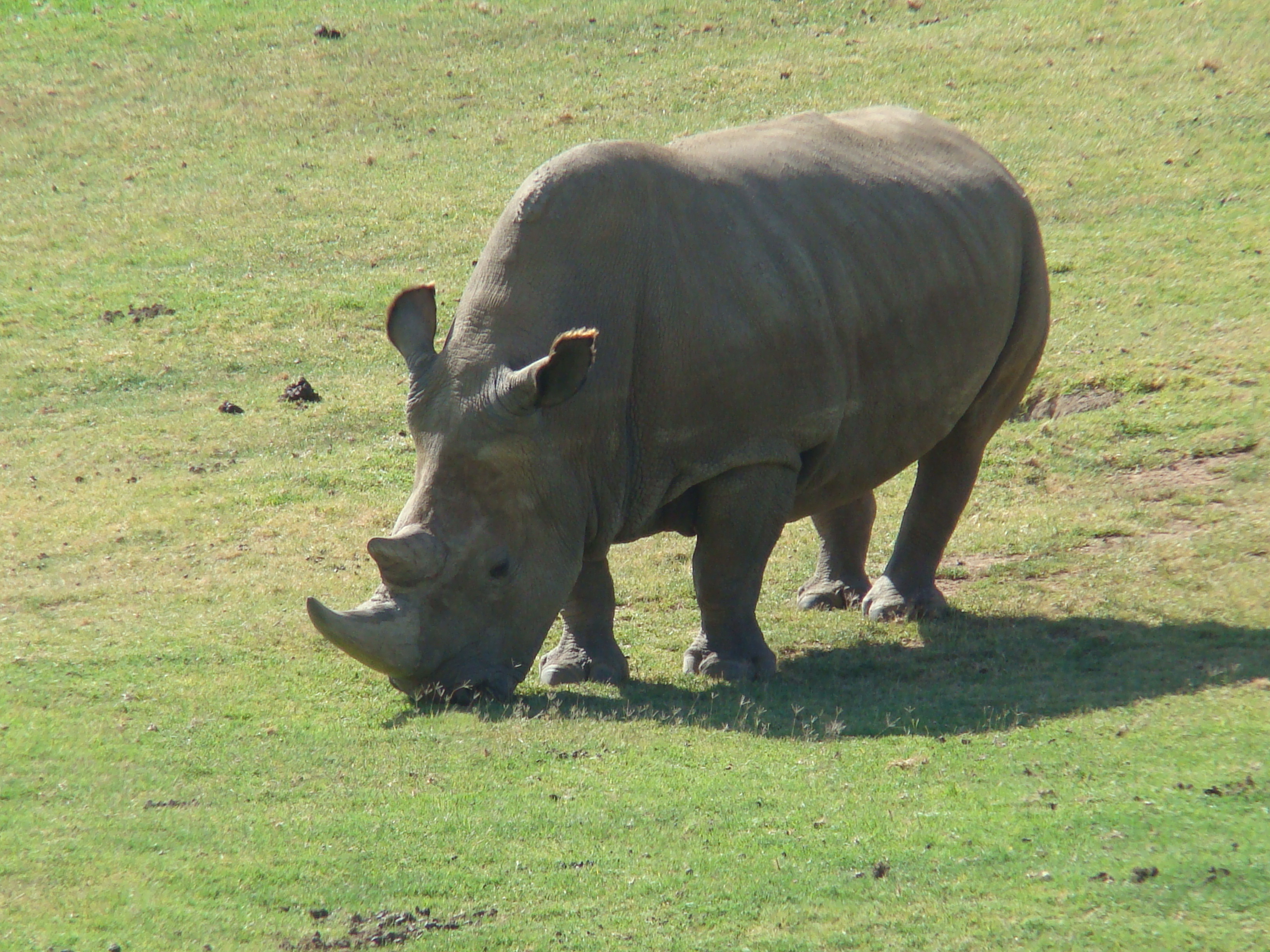
Angalifu, the late White Rhino.
This isn’t something new. It is hard to know what share of species goes extinct each year, as we don’t even know how many species there are on our wonderful planet. Science’s best estimates are that we lose roughly 0.01% to 0.1% of our species annually, which doesn’t seem that drastic at first, but actually translates to an estimated 10,000 to 100,000 species per year. 100,000! Never should the highlight of a year be a picture of Kim Kardashian on a magazine rather than the incredible amount of animals that died off in that year. In fact, extinction rates are so high, 1,000% to 10,000% higher than past non-altered extinction rates, that many are calling this episode the sixth mass extinction of all time. Keep in mind that historically, a mass extinction has been an asteroid slamming into the Earth. That’s not something we as humans want to emulate, and yet, we are heading toward that magnitude of an event faster than ever, with no real plan to stop it. Of course, we aren’t there just yet. It is estimated that by mid-century 30% to 50% of all species on Earth will go extinct, rivaling both the Triassic/Jurassic extinction and the Late Devonian mass extinction, considered two of the five biggest mass extinctions of all time. We are clearly at a point that we have to start doing something; a third of all amphibians are already going extinct, at a rate of 25,000-45,000 times the background or normal extinction rate. Even primates, our closest relative on this planet, have 50% of their population at risk of extinction. We aren’t on a good path here.
I’m not writing this just to depress you, though. We do have some hope, if not a way to stop the ultimate demise of much of the life on earth. As much as I wish it weren’t true, there is most likely no economical way to halt the pace of the industrial growth that is compromising our natural resources and habitats. Based on persistent long-term trends, it appears that sooner or later we will all be living in an urban or suburb environment (or a dustbowl, if you are Matthew McConaughey), and the associated environmental damage will be very hard to reverse. But this doesn’t mean that the affected species can’t come back from the dead. Although we aren’t exactly there yet, with a failed try at bringing an extinct species bucardo (a type of Spanish Ibex) back to life ending in a deformed baby dying soon after birth, we are getting extremely close. We all know that Jurassic Park is a fiction, as even the more recent Woolly Mammoth is too far back in time to clone. But, there are plenty of recently extinct species that are well on their way to being cloned, such as the Hawaii Po’ouli bird and more. This may be commonplace in the future, the cloning and repopulation of dying species. Earth’s animals are precious and define our planet; we want to protect them from our destructive impact for as long as we can. This is the first part in a 4 part series on de-extinction, increasing extinction rates, conservation technology and more. Check back the next installment in the series soon!
Sources: http://wwf.panda.org/about_our_earth/biodiversity/biodiversity/ http://www.biologicaldiversity.org/programs/biodiversity/elements_of_biodiversity/extinction_crisis/ http://www.bbc.co.uk/nature/extinction_events http://ngm.nationalgeographic.com/2013/04/125-species-revival/zimmer-text http://www.nature.com/news/2011/110823/full/news.2011.498.html